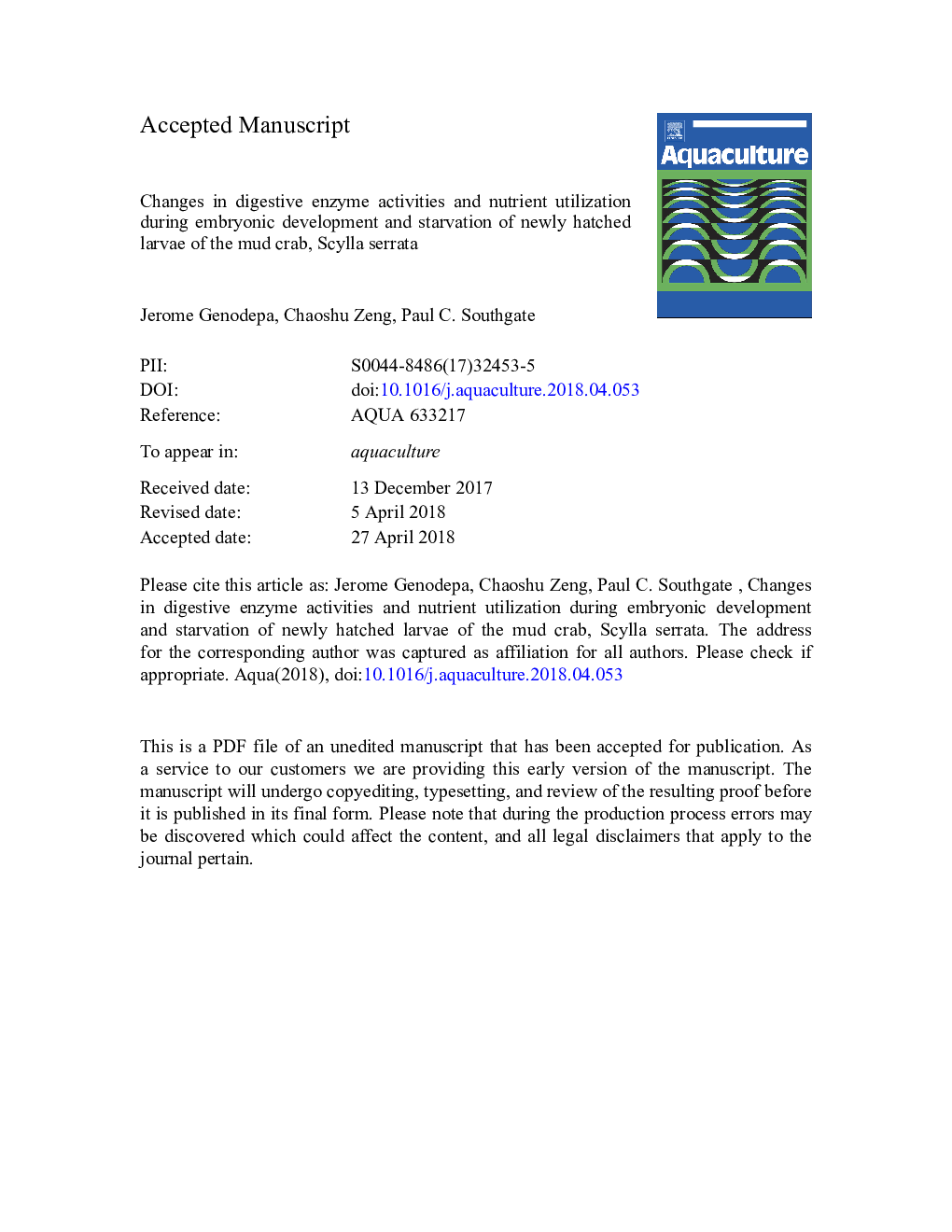| کد مقاله | کد نشریه | سال انتشار | مقاله انگلیسی | نسخه تمام متن |
|---|---|---|---|---|
| 8493130 | 1552795 | 2018 | 27 صفحه PDF | دانلود رایگان |
عنوان انگلیسی مقاله ISI
Changes in digestive enzyme activities and nutrient utilization during embryonic development and starvation of newly hatched larvae of the mud crab, Scylla serrata
دانلود مقاله + سفارش ترجمه
دانلود مقاله ISI انگلیسی
رایگان برای ایرانیان
موضوعات مرتبط
علوم زیستی و بیوفناوری
علوم کشاورزی و بیولوژیک
علوم آبزیان
پیش نمایش صفحه اول مقاله

چکیده انگلیسی
One of the most important yet poorly understood components of hatchery production of crustaceans is larval nutrition and digestive capacity. Larvae of aquatic animals, particularly early larvae, rely primarily on chemical digestion of ingested foods using enzymes. This study assayed the major digestive enzymes of the mud crab, Scylla serrata, during embryonic development and after various periods of starvation of the newly hatched larvae, to assess larval capacity to digest major nutrients and to evaluate the relative utilization of these nutrients for energy production. Lipids were the first energy reserves utilized during the early periods of embryonic development as indicated by the early significant increase in esterase activity compared to the relatively low and steady levels of amylase and protease activities. As readily available lipid reserves were depleted, and became insufficient to meet the increasing energy demands towards the end of embryonic development, protein and, to some extent carbohydrates, were increasingly utilized. This was demonstrated by the levelling of esterase activities, coinciding with significant increases in protease and esterase activities towards the final phase of embryonic development. Starved newly-hatched S. serrata larvae continued to utilize mostly proteins as indicated by relatively high protease activities compared to amylase and esterase activities. Persistent high protease activity in starved S. serrata larvae, suggested degradation of structural proteins, implying the need to immediately feed newly hatched larvae. These results highlight the significance of lipid reserves in developing embryos of S. serrata, and the importance of appropriate broodstock nutrition and management to ensure that these reserves are accumulated sufficiently to produce high quality eggs and larvae.
ناشر
Database: Elsevier - ScienceDirect (ساینس دایرکت)
Journal: Aquaculture - Volume 493, 1 August 2018, Pages 137-143
Journal: Aquaculture - Volume 493, 1 August 2018, Pages 137-143
نویسندگان
Jerome G. Genodepa, Chaoshu Zeng, Paul C. Southgate,